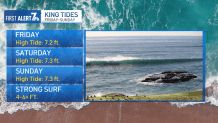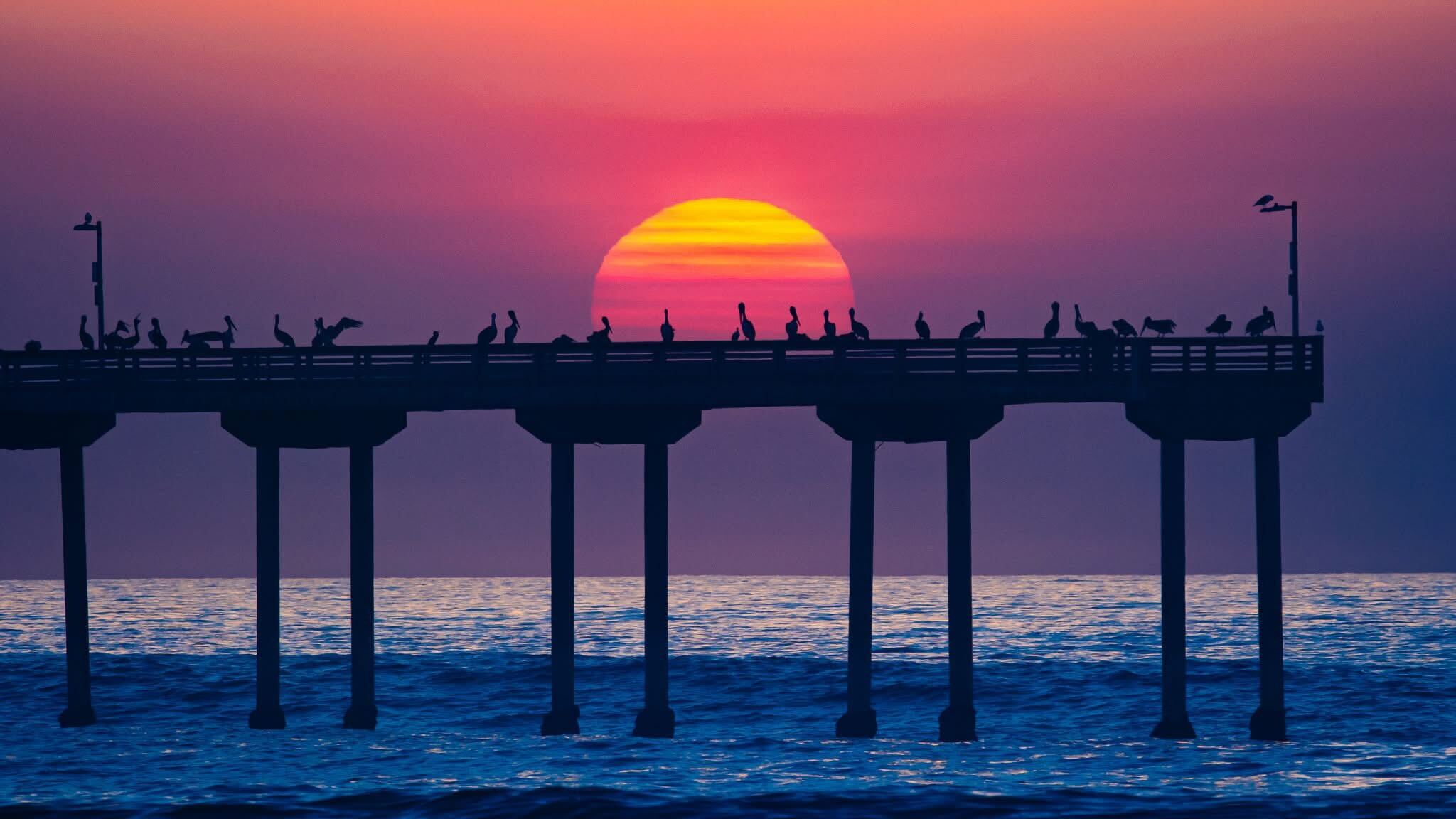Higher-than-normal (and lower-than-normal tides) are headed back to San Diego's coasts this weekend, according to NBC 7 meteorologists.
King tides — the phenomenon that describes what are typically some of the highest tides of the year — are happening Friday, Saturday and Sunday. These uniquely high tides are caused by a stronger-than-normal gravitational pull from the moon and sun. A full moon is expected to occur on Sunday.
NBC 7's meteorologist Brooke Martell said high tides could peak around 7 feet Friday through Sunday, and there will be some stronger surf as we head into the weekend.
Between the higher-than-normal tide and elevated surf, minor coastal flooding is possible. Some areas that are more prone to this are Imperial Beach, La Jolla Shores, Cardiff, and Del Mar. A beach hazard statement will be in place through Sunday because of these conditions, Martell said.
Get top local stories in San Diego delivered to you every morning. Sign up for NBC San Diego's News Headlines newsletter.
“They’re called King Tides for a reason. They can create a royal mess along the boardwalk here [Ocean Beach], and we wanna make sure that the water stays on that side of the seawall here," said Jose Ysea, a city of San Diego spokesperson. “As we saw this morning, water was already reaching the berms and pulling some of that sand back out into the ocean.”

What is a king tide?
Local
A king tide is an informal name for exceptionally high tides known as spring tides, caused by a stronger-than-normal gravitational pull from the moon and sun.
King tide events create a dramatic coastline, with not only the highest tides but also the lowest.
While king tides are known for being exceptionally high, low tides may provide the best opportunity for beachgoers. During these even lower tides, it may be possible to see even more creatures in tide pools and along the shoreline.
Some popular tide pool locations in San Diego are La Jolla Tide Pools, Cabrillo National Monument Tide Pools, Sunset Cliffs Natural Park, Dike Rock Tide pools, Cardiff State Beach Tide Pools and Swami's State Beach Tide Pools, although there's many more.
Why are king tides unusual?
While high tides occur twice a day, king tides occur only a few times a year when a new or full moon is closest to Earth during specific seasons. On the West Coast, they typically happen around the summer and winter solstice, the latter of which is on Dec. 21, according to the National Oceanic and Atmospheric Administration (NOAA).
An increase in the gravitational pull can be caused by different reasons, like when a supermoon is occurring. Other causes for even higher king tides could be storm surges or an El Niño event, which warms and expands ocean waters.
When can I see the king tides?
San Diego has several stations that report tides to NOAA.
Here are the tide predictions from the Scripps Institution of Oceanography reporting station at the Scripps Pier in La Jolla:
| Date | Time | High/Low, Height |
|---|---|---|
| Friday, Dec. 13, 2024 | 6:44 AM | high, 6.66 ft |
| Friday, Dec. 13, 2024 | 2:04 PM | low, -1.27 ft |
| Saturday, Dec. 14, 2024 | 7:25 AM | high, 6.85 ft |
| Saturday, Dec. 14, 2024 | 2:49 PM | low, -1.55 ft |
| Sunday, Dec. 15, 2024 | 8:07 AM | high 6.84 ft |
| Sunday, Dec. 15, 2024 | 3:33 PM | low, -1.59 ft |
Check the full calendar of tide predictions from NOAA here.
Check tide predictions for other parts of San Diego County by clicking here and selecting a reporting station closest to you.
Are king tides dangerous?
King tides are predictable, but they are often high enough to cause beach erosion, street flooding and flooding of some homes or businesses that are close enough to the coast. In the past, the very high tide has caused flooding in places like Imperial Beach and La Jolla Shores.
While king tides are not caused by sea-level rise, they can be "a good preview of what we may be dealing with more regularly in the future when the sea levels are higher," Bledsoe said. The city of San Diego is projected to see a rise between 1.2 and 2.8 feet by 2050.
The California King Tides Project, organized by the California Coastal Commission, is asking anyone with a camera who is nearby coasts, bays or deltas to become a scientific documentarian this weekend. Citizen scientists up and down the California coast and upload their videos and photos to help the state keep track of the changing coastline. To get involved, click here.



